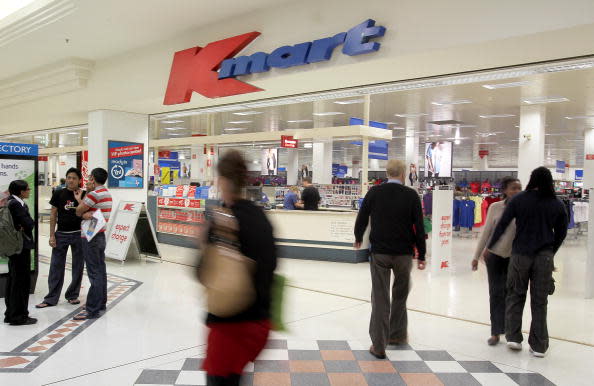The big problem with Kmart

In the post-Marie Kondo world, shoppers everywhere are abandoning fast fashion in droves and instead leaning towards purchases which they hope will ‘spark joy’ both now and in the long term.
The global movement has well and truly extended to Australia, where Kmart has spent years earning its place in the country’s psyche as a one-stop-shop for almost everything.
But now some influencers, who were once devotees of the department store, are turning their backs on the much-loved department store.
For Yaz Akauola, also known as budget_chic on Instagram, the shift came when she realised how many of the store’s constant new releases end up discarded, often unused.
“I’ve become much more aware of the impact of fast fashion,” she tells Yahoo Lifestyle Australia. “I’ve noticed and so many other people have noticed lots of Kmart and other cheap retail chain stores products are ending up in op shops.
“We’re buying into these ‘trends’, not wearing them and donating them or throwing them out without considering all the time charities take sorting, pricing and trying to re-sell them.
“And if all else fails, we’re contributing to landfill.”
Kmart has seen exponential growth in the past half decade, doubling its before-tax earnings between 2012 and 2017 to $553 million.

Contributing to their success has been Kmart’s army of dedicated customers and influencers who spawned a subculture of Facebook groups and Instagram pages dedicated to taking full advantage of its ever changing products – and low prices.
Yaz, who is all about looking stylish on a budget, was one of the influencers at the centre of this movement before her recent change of heart meant any old bargain was no longer able to spark her interest, let alone joy.
“Don’t get me wrong, I love a good bargain but I don’t want to end up with all this crap that I’ll only use once before it ends up in an op shop or landfill,” she says.
This feeling of disenchantment is echoed by super-saver Nataasha Torzsa whose Instagram tashagetsfrugal aims to teach young women to embrace being frugal and ultimately take control of their finances.
A post shared by Kmart Australia (@kmartaus) on Jan 21, 2019 at 10:01pm PST
A post shared by My ordinary & organised home (@ordinary.organised.home) on Mar 11, 2019 at 8:06pm PDT
“There are Instagram influencers out there who admit they go to Kmart every day just to see what’s new,” she tells Yahoo Lifestyle.
“This habit can cost you hundreds of dollars over time that could be better spent on investments or savings.”
She goes on to explain how masses of cheap, rejected, homewares are scaling new heights across Australia’s landfills, in addition to the unwanted buys collecting dust in charity shops.
A post shared by Kmart Australia (@kmartaus) on Oct 25, 2018 at 11:01am PDT
“Kmart argues that it has lowered its ecological impact, but their designs ride on the back of rapidly changing trends, and that means buying and dumping at the fastest rate yet,” she says.
“One hit of ‘retail therapy’ makes everything seem alright until a few months or even weeks later when that basket, jug or vase isn’t on trend anymore, and it ends up at Vinnies or worse, landfill.
“And then you go back to the shops and the cycle starts again.”
Got a story tip? Send it to lifestyle.tips@verizonmedia.com
Want more lifestyle and celebrity news? Follow Yahoo Lifestyle on Facebook, Twitter and Instagram.
Or sign up to our daily newsletter here.

 Yahoo Lifestyle
Yahoo Lifestyle 
